The Grape Mistake
POSTED ON 19/04/2009Oops, you have to feel a bit sorry for the poor Aussie winemaker who was doing very well with his dry white albariño until he found out that it wasn’t albariño after all but most likely savagnin blanc.
Albariño is the fashionable Spanish white grape variety of Rias Baixas in Galicia and when Damien Tscharke found that it might suit the Australian climate he went about sourcing some of the Spanish white grape variety in order to make a dry white wine from it.
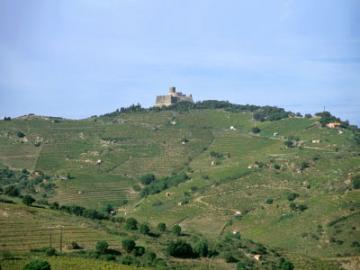 Rias Baixas, Galicia ©static.howstuffworks.com
Rias Baixas, Galicia ©static.howstuffworks.com
For this he deserves credit because the more diversity of grape stock in the Australian wine industry, the better it can develop a range of styles and flavours with which to compete at home and broad.
In fact he did so well with his wine made from his wine, ‘Girl Talk’, that it became his best-selling wine and 24 other wineries followed suit.
‘I asked the South Australian Vine Improvement Inc if there was any of it in the country’ he is reported as saying, ‘and they located the stock with the CSIRO (Australia's Commonwealth Scientific and Industrial Research Organisation) at Merbein, near Mildura. Everyone acted in good faith. It just turns out that it may never have been albariño’.
Apparently the CSIRO had tested his vines each year since 2002 and had confirmed they were albariño, but it seems they may only have been comparing it with the original stock and it looks like the original stock was something else.
After a French ampelographer raised suspicions last year saying that some vignerons in Spain had admitted as far back as 1998 that they may have mixed up some genetic material, including albarino, which was then exported, the CSIRO DNA tested Mr Tscharke’s vines and found they were more likely to be the French varietal called savagnin blanc, or traminer.
This wouldn’t be the first time a grape mix-up has occurred. When California’s pioneering Rhône Ranger Randall Grahm planted the Spanish ‘tempranillo’ in his Santa Cruz vineyards, he was embarrassed to find out that it wasn’t tempranillo after all but something completely different.
Even more embarrassingly, the first South African plantings of ‘chardonnay’ were found not to be chardonnay at all but a grape variety from Alsace. It caused quite a stir when it was discovered, but chardonnay has since gone on to become a significant player on the South African wine scene.
The unfortunate problem Damien Tscharke faces is one of image and perception rather than reality because albariño is a fashionable grape variety and savagnin blanc, if that’s what this is, isn’t.
And yet by all accounts the wine is successful because it’s enjoyable and has the catchy name ‘Girl Talk’. If that’s the case, he’s created a brand and there’s no reason why he shouldn’t simply stick the name savagnin blanc on the back label, if that’s what it is, or simply not mention variety until it’s confirmed.
It appears that Ross Brown of Brown Brothers who also make a wine from the variety says that ‘If we had to relabel albariño as traminer or savagnin blanc, I doubt we'd persist with it. It's a shame, but sheer quality isn’t the only thing that matters’.
Maybe he’s not aware of the story of Chile’s carmenère which was thought to be merlot until a French ampelographer came along and discovered in the early 1990s that it was in fact carmenère, an ancient Bordeaux variety.
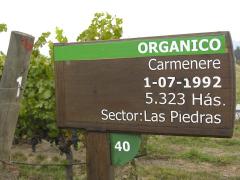 Carmenere
Carmenere
The industry didn’t want to know but one or two brave souls declared that Chile should be proud of its heritage and ran with it. Today, it’s become a strong varietal in its own right and Chile’s usp.
As the main component of vin jaune in its home region of the Jura, savagnin blanc is capable of making some excellent if unusual dry whites and it’s nothing to be ashamed of. In fact, if Damien Tsharke has courage to re-name it savagnin blanc and run with it, as it seems to do well enough in Australia, he may just have added another string to the bow of unusual Australian white wine varieties.
And for that Mr Tscharke would surely get the credit he deserves.
Wines of the Week - McHenry Hohnen
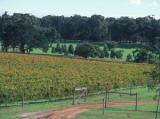 McHenry Hohnen Vineyards ©mchv.com.au
McHenry Hohnen Vineyards ©mchv.com.au
Once upon a time Australia was founded on the idea of family companies, just like good old Europe. There were the Browns, the Hill-Smiths, the de Bortolis and so on. And then the big boys took over until they too were hoovered up by multinational conglomerates. Soon the Australian wine industry was being run by corporates and that’s partly Australia’s problem: pleasing the shareholder at the expense of the wine drinker. Fortunately, there’s a trend in Australia that’s to be welcomed: reversing the corporate tide of takeovers and mergers by the guys that used to make make wine for those companies but now find satisfaction in downsizing and making their own family wines.
David Hohnen is one such man. He’s the man who helped launch 1000 Kiwi sauvignon blancs with his brilliant creation of the ‘iconic’ (hate that word but in this instance it’s true) Cloudy Bay label. He was so successful in fact that Cloudy Bay and his Western Australian baby, Cape Mentelle, were swallowed up by the luxury goods empire, Louis Vuitton Moët Hennessy. He breezed through town this week and while he was at it, stopped off to show me the latest releases from McHenry Hohnen, his family vineyards in Western Australia’s Margaret River on the Indian Ocean. Considered, almost reserved, Hohnen seems a little unAustralian, but maybe there’s a side to him I just don’t know about.
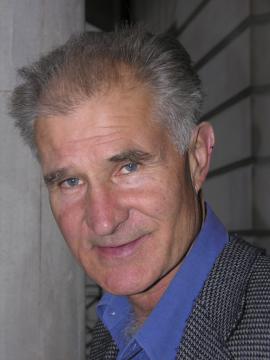 David Hohnen
David Hohnen
When David Hohnen sold Cape Mentelle, he decided to concentrate on making wine with his brother-in-law, Murray McHenry, from their 300 acres spread over four vineyards in Margaret river: the McHenry vineyard that used to be used for Cape Mentelle’s wines and three others all in the Witchcliffe area south of the town of Margaret River itself. 18 varieties are cultivated, from the usual burgundy and bordeaux suspects to the Mediterranean’s marsanne, roussanne, viognier, grenache, mataro, shiraz along with Spain’s tempranillo, graciano, Italy’s barbera, sangiovese plus zinfandel.
McHenry Hohnen now boasts its own substantial winery on Rocky Road near Devil’s Lair and the wine is made by his daughter Freya and her husband Ryan Walsh. Hohnen likes to call what he does ‘great grandpa farming’, but not because he’s a grandfather (although you wouldn’t know it from his youthful appearance). The term is used to describe ‘old-fashioned common sense’ methods of cultivation that are basically organic but without the vineyards being certified organic or biodynamic.
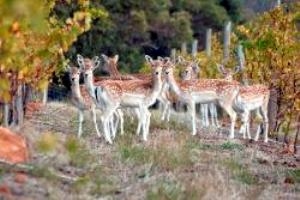 Vineyard deer ©mchv.com.au
Vineyard deer ©mchv.com.au
It’s farming, in other words, as great grandpa might have done it 50 years ago before agrochemicals came along to spoil the party. Deer and a flock of 1400 Wiltshire ewes provide the necessary grazing to keep down the grasses and weeds, helping provide nitrogen in Margaret River’s poor soils, and of course provide the necessary manure. It’s a system in which the soil and its organisms, along with plants, insects and animals, co-exist in equilibrium.
The 2008 McHenry Hohnen Semillon Sauvignon, 12.5%, is their staple dry white, a typical Margaret River blend, using contract growers’ fruit for a dry white which is aromatic, fresh, and unoaked, its peachy Graves-style fruit refreshed by mouthwateringly citrusy acidity, and while it doesn’t have the depth of the best examples like Cullen and Voyager, it’s a good drink and example of its type. 87
The 2008 McHenry Hohnen 3 Amigos white, 13.5%, is a blend of marsanne, roussanne and chardonnay, the latter two grapes adding freshness and a zippy backbite to the richer, peachy marsanne which is framed by a subtle toasty oak from barrel fermentation and slightly nutty on the finish. In due course, Hohnen wants to replace the chardonnay with roussanne to make it more of a Rhone-style blend but roussanne is not an easy grape to cultivate. 88
The 2008 McHenry Hohnen Caldargup Brook Vineyard Chardonnay, 13.5%, is the first of two single vineyard chardonnays made in small batches of just 6 tonnes each. It’s delicious. There’s a fine buttery, citrusy nose and lovely fruit richness on the palate with a butterscotchy, burgundian character, beautifully balanced and full-flavoured chardonnay fruit with a nuttiness cut by incisive citrusy acidity, very much a wine in the modern Western Australian mould. 92
The 2008 McHenry Hohnen Rocky Road Vineyard Chardonnay, 13.5%, is also very good, a little more mute on the nose but with strikingly fresh, crisp chardonnay fruitiness and again very subtle, nutty oaking thanks to very good crafting though use of only second , third and fourth use rather than new barrels, topped off with an appealing grapefuity zestiness. 90.
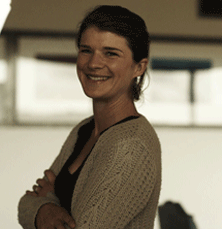 Freya Hohnen ©mchv.com.au
Freya Hohnen ©mchv.com.au
The 2007 McHenry Hohnen Shiraz, 14.5%, is classic Westren Australian shiraz, by which I mean very much a cross between the cool climate style with its attractively peppery aromas, black fruits and silky texture and the bigger, firmer more chocolatey styles you see in the Barossa; I like it with its hints of pepper and smoky bacon, but it’s still youthful and tight and could do with a year’s ageing in bottle. 88
The 2007 McHenry 3 Amigos red, 14.5%, is a southern Rhone-style blend of shiraz, grenache and mataro (aka mourvèdre). With its dark cherryish and spicy fruit, it’s supple and opulent, but not oversweet, the succulent tannins and acidity contributing to attractive savoury characters in a wine that’s a sort of Margaret river Gigondas. 89
The 2007 McHenry Hohnen The Rolling Stone, 14.5%, is a Bordeaux-style blend of equal parts of malbec, merlot, cabernet sauvignon and petit verdot; it’s big, rich and spicy full of liquorice and dark chocolate aromas and flavours along with a very nice berry-like cassis character with fine concentration and hardly any perceptible oak contributing a freshness and lightness to this vivid, appealing blend. 92+
The 2006 McHenry Hohnen Tiger Country (the tiger is for tiger snakes) is an unusual mix of tempranillo, petit verdot and cabernet sauvignon, a juicy red with an attractive dark fruited and savoury character whose restraint makes it a very good food wine. It may just have a slight dip in the middle that could do with fleshing out a bit. Either that or it looked a tad skinny after the Rolling Stone. 88
The 2008 The 2007 McHenry Hohnen Rocky Road Zinfandel, 14.5%, reprises what Hohnen did so well at Cape Mentelle after planting zinfandel there in 1972 (the first commercial zin was made in 1978). It’s classic zin, although without the excess of oak and alcohol that mars so many of the California styles; but rather it’s brambly and plummy on the nose, deliciously juicy and thoroughly drinkable, with warming plum and prune fruit but not baked or raisined but rather fresh and juicy. 90
Visit www.mchv.com.au for more details and for stockists try Louis Latour: 0207 409 7276 and the Geronimo Inns group (www.geronimo-inns.co.uk).

